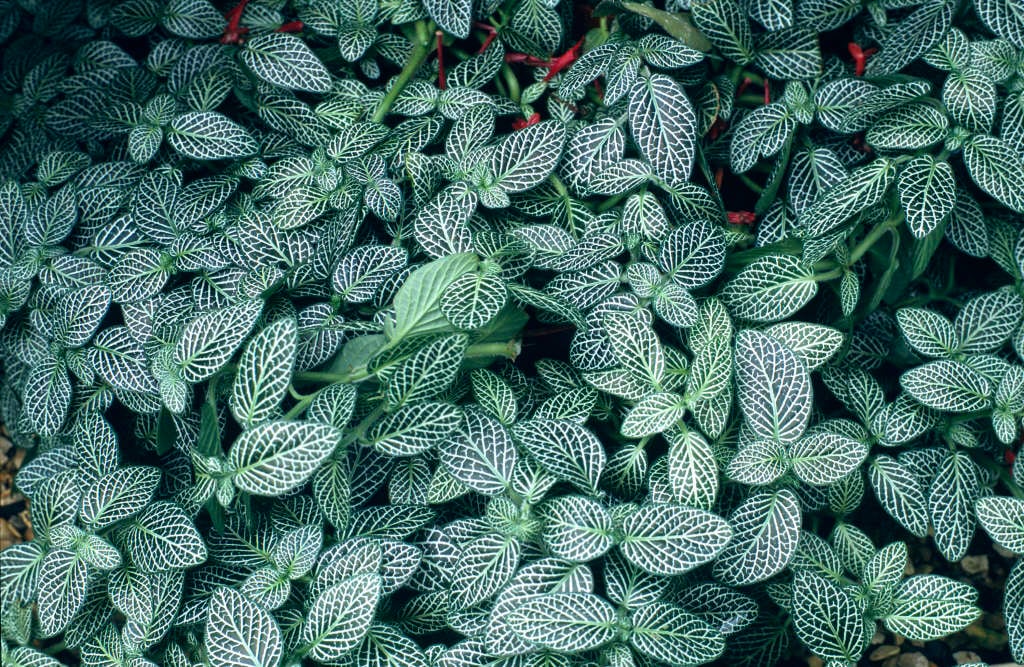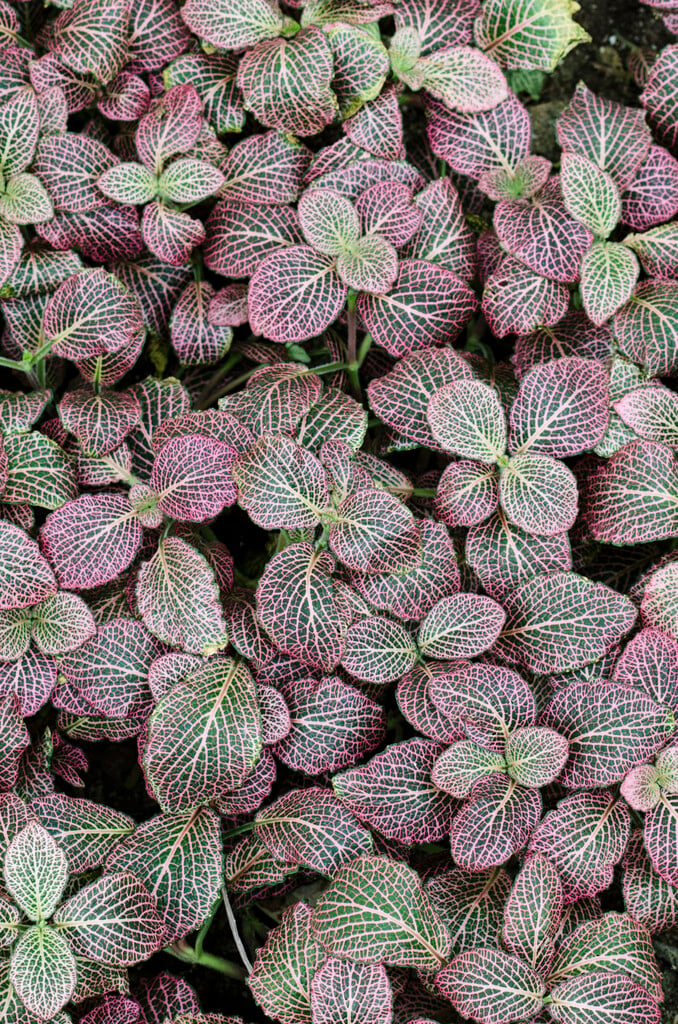Fittonia albivenis Verschaffeltii Group
mosaic plant
An evergreen perennial forming a mat of rooting stems to 15cm tall, bearing broadly elliptic leaves to 10cm long, deep olive-green with pink veins. Insignificant, white flowers are rarely produced
Size
Ultimate height
0.1–0.5 metresTime to ultimate height
1–2 yearsUltimate spread
0.1–0.5 metresGrowing conditions
Moisture
Moist but well–drainedpH
NeutralColour & scent
| Stem | Flower | Foliage | Fruit | |
| Spring | Green Pink | |||
|---|---|---|---|---|
| Summer | Green Pink | |||
| Autumn | Green Pink | |||
| Winter | Green Pink |
Position
- Partial shade
Aspect
East–facing or South–facing or West–facing
Exposure
Sheltered Hardiness
H1ABotanical details
- Family
- Acanthaceae
- Native to GB / Ireland
- No
- Foliage
- Evergreen
- Habit
- Matforming
- Genus
Fittonia are evergreen perennials with rooting stems forming mats of opposite, attractively coloured or veined leaves, and insignificant white flowers seldom seen in cultivation
- Name status
Accepted
- Plant range
- Peru
How to grow
Cultivation
Grow indoors in potting compost in indirect light and high humidity. When in growth water moderately, keeping just moist and apply a balanced liquid fertiliser monthly. Keep barely moist in winter. See Fittonia for further advice
Propagation
Propagate by tip cuttings with 3 or 4 pairs of leaves in spring or by layering in spring or summer
Suggested planting locations and garden types
- Patio and container plants
Pruning
No pruning required
Pests
May be susceptible to glasshouse red spider mite and mealybugs
Diseases
May be susceptible to grey moulds
Love gardening
Sign up to receive regular gardening tips, inspiration, offers and more
View our Privacy Policy
Get involved
The Royal Horticultural Society is the UK’s leading gardening charity. We aim to enrich everyone’s life through plants, and make the UK a greener and more beautiful place.

